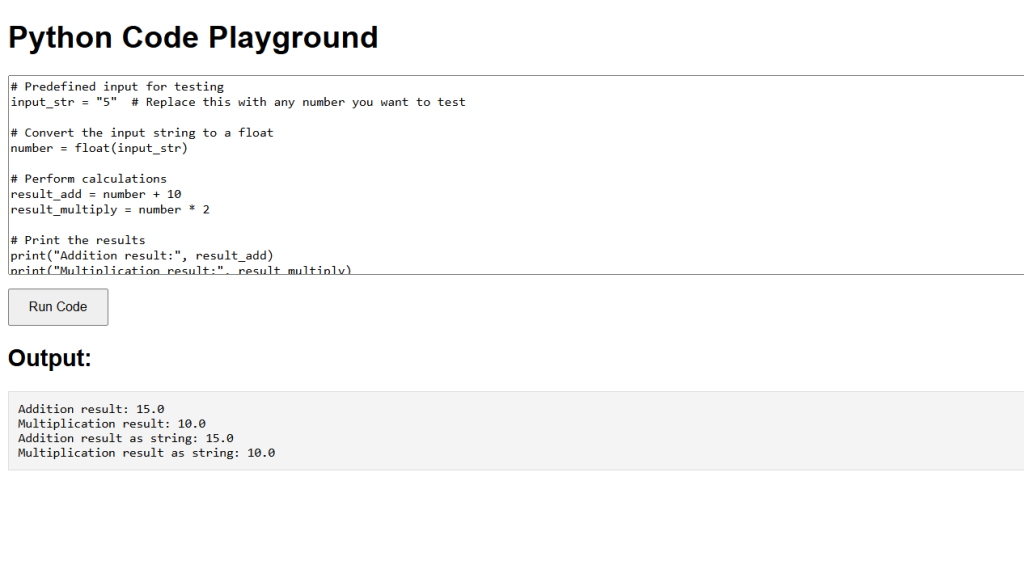Casting is the process of converting a variable from one data type to another. In Python, you can cast between different data types using built-in functions. This is particularly useful when you need to perform operations that require a specific data type.
Casting Functions
Python provides several built-in functions for casting between data types:
- int() – Converts a value to an integer.
- float() – Converts a value to a floating-point number.
- str() – Converts a value to a string.
Converting to Integer
Use the int() function to convert a value to an integer. This function can handle strings representing whole numbers, floating-point numbers (by truncating the decimal part), and boolean values.
In the example below, the int() function is used to convert a string "10" to an integer 10, a float 3.14 to an integer 3, and a boolean True to an integer 1.
# Convert string to integerx = int("10")print(x) # Output: 10# Convert float to integery = int(3.14)print(y) # Output: 3# Convert boolean to integerz = int(True)print(z) # Output: 1Converting to Float
Use the float() function to convert a value to a floating-point number. This function can handle strings representing numbers and integer values.
In the example above, the float() function is used to convert a string "3.14" to a float 3.14 and an integer 10 to a float 10.0.
# Convert string to floata = float("3.14")print(a) # Output: 3.14# Convert integer to floatb = float(10)print(b) # Output: 10.0Converting to String
Use the str() function to convert a value to a string. This function can handle numbers, booleans, and other data types.
In the example above, the str() function is used to convert an integer 10 to a string "10", a float 3.14 to a string "3.14", and a boolean False to a string "False".
# Convert integer to stringc = str(10)print(c) # Output: "10"# Convert float to stringd = str(3.14)print(d) # Output: "3.14"# Convert boolean to stringe = str(False)print(e) # Output: "False"Python Casting Example Code
This program uses a predefined input value instead of prompting the user. The input, which is a string, is converted to a float using the float() function. The program performs addition and multiplication operations and prints the results. Finally, the results are converted to strings and printed again.
# Predefined input for testinginput_str = "5" # Replace this with any number you want to test# Convert the input string to a floatnumber = float(input_str)# Perform calculationsresult_add = number + 10result_multiply = number * 2# Print the resultsprint("Addition result:", result_add)print("Multiplication result:", result_multiply)# Convert the results to strings and printprint("Addition result as string:", str(result_add))print("Multiplication result as string:", str(result_multiply))

